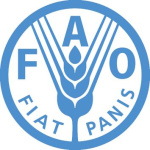- Industria: Agriculture
- Number of terms: 87409
- Number of blossaries: 0
- Company Profile:
Established in October 1945 with the objective of eliminating hunger and improving nutrition and standards of living by increasing agricultural productivity, FAO coordinates the efforts of governments and technical agencies in programs for developing agriculture, forestry, fisheries, and land and ...
In a set of measurements, the central value above and below which there are an equal number of measurements.
Industry:Biotechnology
In agriculture, the ability of a plant to colonize a disturbed habitat and compete with cultivated species.
Industry:Biotechnology
In an ELISA or other immunological assay system, the antibody that binds to the primary antibody. The secondary antibody is often conjugated with an enzyme such as alkaline phosphatase.
Industry:Biotechnology
In an ELISA or other immunological assay, the antibody that binds to the target molecule.
Industry:Biotechnology
In an organism, concentration of materials which are not components critical for that organism's survival. Usually it refers to the accumulation of metals or other compounds (e.g., DDT). Many organisms - plants, fungi, protists, bacteria, etc. - accumulate metals when grown in a solution of them, either as part of their defence mechanism against the poisonous effect of those compounds, or as a side-effect of the chemistry of their cell walls. Bio-accumulation is important as part of the microbial mining cycle (q.v.), removing toxic metals from wastewater, as a purification (bioremediation) process, etc.
Industry:Biotechnology
In AnGR: A breed where it is no longer possible to recreate the breed population. Extinction is absolute when there are no breeding males (semen), breeding females (oocytes), nor embryos remaining.
Industry:Biotechnology
In AnGR: A breed where the total number of breeding females and males is greater than l 000 and 20 respectively; or the population size approaches 1 000 and the percentage of pure-bred females is close to 100%, and the overall population size is increasing.
Industry:Biotechnology
In AnGR: A breed where the total number of breeding females is between 100 and 1 000 or the total number of breeding males is less than or equal to 20 and greater than five; or the overall population size is close to, but slightly above 100 and increasing, and the percentage of pure-bred females is above 80%; or the overall population size is close to, but slightly above, 1 000 and decreasing, and the percentage of pure-bred females is below 80%.
Industry:Biotechnology
In AnGR: A breed where the total number of breeding females is less than 100 or the total number of breeding males is less than or equal to five; or the overall population size is close to, but slightly above 100 and decreasing, and the percentage of pure-bred females is below 80%.
Industry:Biotechnology
In AnGR: A measure of the genetic similarity between any pair of populations. Such distance may be based on phenotypic traits, allele frequencies or DNA sequences. For example, genetic distance between two populations having the same allele frequencies at a particular locus, and based solely on that locus, is zero. The distance for one locus is maximum when the two populations are fixed for different alleles. When allele frequencies are estimated for many loci, the genetic distance is obtained by averaging over these loci.
Industry:Biotechnology
